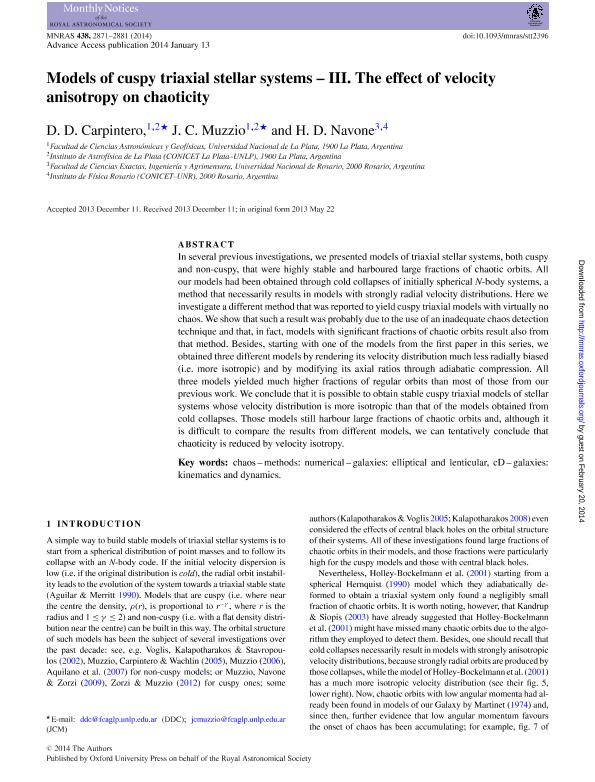Artículo
Models of cuspy triaxial stellar systems. III: the effect of velocity anisotropy on chaoticity
Fecha de publicación:
03/2014
Editorial:
Wiley Blackwell Publishing, Inc
Revista:
Monthly Notices of the Royal Astronomical Society
ISSN:
0035-8711
Idioma:
Inglés
Tipo de recurso:
Artículo publicado
Clasificación temática:
Resumen
In several previous investigations we presented models of triaxial stellar systems, both cuspy and non cuspy, that were highly stable and harboured large fractions of chaotic orbits. All our models had been obtained through cold collapses of initially spherical N-body systems, a method that necessarily results in models with strongly radial velocity distributions. Here we investigate a different method that was reported to yield cuspy triaxial models with virtually no chaos. We show that such result was probably due to the use of an inadequate chaos detection technique and that, in fact, models with significant fractions of chaotic orbits result also from that method. Besides, starting with one of the models from the first paper in this series, we obtained three different models by rendering its velocity distribution much less radially biased (i.e., more isotropic) and by modifying its axial ratios through adiabatic compression. All three models yielded much higher fractions of regular orbits than most of those from our previous work. We conclude that it is possible to obtain stable cuspy triaxial models of stellar systems whose velocity distribution is more isotropic than that of the models obtained from cold collapses. Those models still harbour large fractions of chaotic orbits and, although it is difficult to compare the results from different models, we can tentatively conclude that chaoticity is reduced by velocity isotropy.
Archivos asociados
Licencia
Identificadores
Colecciones
Articulos(IALP)
Articulos de INST.DE ASTROFISICA LA PLATA
Articulos de INST.DE ASTROFISICA LA PLATA
Articulos(IFIR)
Articulos de INST.DE FISICA DE ROSARIO (I)
Articulos de INST.DE FISICA DE ROSARIO (I)
Citación
Navone, Hugo Daniel; Carpintero, Daniel Diego; Muzzio, Juan Carlos; Models of cuspy triaxial stellar systems. III: the effect of velocity anisotropy on chaoticity; Wiley Blackwell Publishing, Inc; Monthly Notices of the Royal Astronomical Society; 438; 4; 3-2014; 2871-2881
Compartir
Altmétricas




